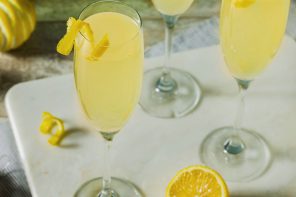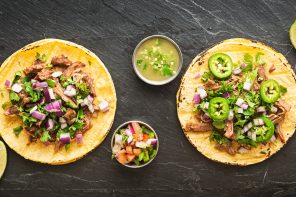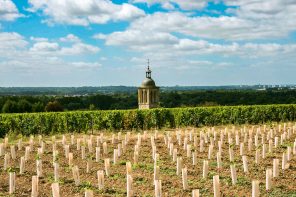Did you know that England is actually producing its own sparkling wine now? Oh yeah, that’s a thing. And for hundreds of years, England has been one of the largest importers of Champagne with more than 30 million bottles imported to the UK in 2013. But in recent years the Brits have been making their own sparkling. It’s good too (really)! Some of the producers (like Chapel Downs, Camel Valley, Hush Heath, Lyme Bay, Nyetimber, Sixteen Ridges and Digby) are even making sparkling wines that rival Champagne. The only issue is — they aren’t Champagne.
Simon Day, the winemaker for Sixteen Ridges Winery feels, “There are those producers who are chasing the Champagne flavor (or even a particular Champagne house), and there are those who are carving out their own niche, perhaps with less well-known varieties. The great news is, there is room for all styles.”
To understand English sparkling and Champagne, we first have to talk about climate.
When comparing southern England and the French region of Champagne, it is easy to see how similar the climates are. Southern England is generally a few degrees warmer in the winter and Champagne slightly cooler in the summer. They are both geographically fairly north, close to the water and have rolling hills. It also rains a lot in both places, which brings us to the importance of soil.
While England and Champagne don’t have exactly the same soils, they do have very common traits, the most important being that they both quickly drain water, meaning the soil is less moist. Champagne has more limestone and chalk while England has more greensand and clay, with a bit of the same chalk that Champagne enjoys.
So we’ve got a similar climate and similar soil types. When it comes to winemaking this can only mean one thing: similar grapes!
The grapes used to make Champagne form what is called the “Holy Trinity” of Chardonnay, Pinot Noir, and Pinot Meunier. These same three varietals grow happily in southern England as well.
So now that we have the grapes, the next major decision English winemakers have to make is how exactly they’re going to carbonate their juice. There are a couple different ways to do this but the method Champagne makers use — and the one many English winemakers have adopted — is called méthode champenoise, also known as the traditional method.
In this process, after the grapes have been picked, pressed, and fermented in stainless steel tanks, the wine is bottled. Then the winemaker adds sugar and yeast and allows the wine to go through a second fermentation in the bottle. Once the yeast eats all of the sugar and farts out alcohol (this gets you drunk) and carbon dioxide (those are the bubbles), the dead yeast gathers in the neck of the bottle. The winemaker then pops open the bottle letting out all of the dead yeast (a messy but fun job!), adds some more wine to the bottle, puts a cork in it, labels it, and ships it off to you to enjoy.
This may sound gross, but the dead yeast inside that bottle cause the toasty, nutty, and creamy flavors and aromas you often taste in Champagne. And since most English sparkling is made in exactly the same way, similar flavors and aromas are tasted.
So, in an industry where a sense of place or terroir is valued in the end result, why would English winemakers try so hard to be like the French? The simple answer, of course, is that Champagne is the carbonated king and the UK already has the demand for it. But the reality is that when the two regions are already so similar, and the French have already perfected the art of sparkling, it would seem silly to try to perfect what has already been perfected. Right?
On the other hand, we’re firm believers that winemaking is an art form that will never truly be “perfect” or finished. And we’ll be the first ones to offer when it comes to tasting how English bubbles change over time!









Being 82 years of age, a winelover, and having lived adjacent to the Western Cape Winelands for some 60 years I have experienced some incredible varietals over this time. This article exposes and identifies a most interesting area and one that has been one high on the list of sparkling wine development options of which wineries would love to contest the “Champagne tag”.
I am not a connoisseur by any means. I enjoy my wines as my mood takes me.
Thank you for a most fascinating article!
You’re very welcome, Don. Hope you can try some English Sparkling soon. It’s very good!